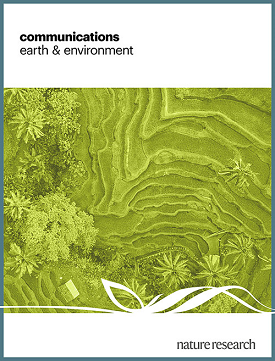Indigenous knowledge with science forms an early warning system for ciguatera fish poisoning outbreak in Vanuatu
IF 8.1
1区 地球科学
Q1 ENVIRONMENTAL SCIENCES
引用次数: 0
Abstract
Indigenous and traditional knowledge of the natural environment is crucial for policymakers and community leaders in Vanuatu. Here, we employ a mixed-methods approach to collect data from East, North, and West Area councils in Ambae Island, Vanuatu, and investigate the integration of science and local indicators to predict the presence of ciguatera fish poisoning to enhance community responses to health risk management. We found fourteen local indicators for the ciguatera outbreak. We also identified uses of scientific information from various sources to verify their Indigenous and Traditional Knowledge before making decisions. This led to the development of ‘The Gigila Framework’ to integrate Indigenous and Traditional Knowledge with science. We also found that both community and government agencies recognize the importance of incorporating community roles into the overall early warning system for ciguatera fish poisoning in Vanuatu. Our study highlights the need for government agencies to collaborate with local communities to evaluate and develop the best practices that enable the integration of Indigenous and Traditional Knowledge with science to improve community responses to health risk management in Vanuatu. Traditional knowledge of plants and animal species, geological hazards, and astronomy combined with Western science observations can create an early warning system for a foodborne illness, Ciguatera fish poisoning in Vanuatu, according to thematic analysis that builds on community interviews.

土著知识与科学形成了瓦努阿图雪卡毒素鱼中毒爆发的预警系统
关于自然环境的土著和传统知识对瓦努阿图的决策者和社区领导人至关重要。在这里,我们采用混合方法从瓦努阿图ambae岛的东部、北部和西部地区委员会收集数据,并调查科学和当地指标的整合情况,以预测雪卡毒素鱼类中毒的存在,以加强社区对健康风险管理的反应。我们找到了14个地方性的雪卡水爆发的迹象。我们还确定了在做出决定之前使用来自各种来源的科学信息来验证他们的土著和传统知识。这导致了“Gigila框架”的发展,将土著和传统知识与科学结合起来。我们还发现,社区和政府机构都认识到将社区作用纳入瓦努阿图雪卡毒素鱼类中毒的整体预警系统的重要性。我们的研究强调,政府机构需要与当地社区合作,评估和制定最佳做法,使土著和传统知识与科学相结合,以改善瓦努阿图社区对健康风险管理的反应。根据建立在社区访谈基础上的专题分析,关于植物和动物物种、地质灾害和天文学的传统知识与西方科学观测相结合,可以为瓦努阿图的一种食源性疾病雪卡泰拉鱼中毒建立一个早期预警系统。
本文章由计算机程序翻译,如有差异,请以英文原文为准。
求助全文
约1分钟内获得全文
求助全文
来源期刊

Communications Earth & Environment
Earth and Planetary Sciences-General Earth and Planetary Sciences
CiteScore
8.60
自引率
2.50%
发文量
269
审稿时长
26 weeks
期刊介绍:
Communications Earth & Environment is an open access journal from Nature Portfolio publishing high-quality research, reviews and commentary in all areas of the Earth, environmental and planetary sciences. Research papers published by the journal represent significant advances that bring new insight to a specialized area in Earth science, planetary science or environmental science.
Communications Earth & Environment has a 2-year impact factor of 7.9 (2022 Journal Citation Reports®). Articles published in the journal in 2022 were downloaded 1,412,858 times. Median time from submission to the first editorial decision is 8 days.
 求助内容:
求助内容: 应助结果提醒方式:
应助结果提醒方式:


